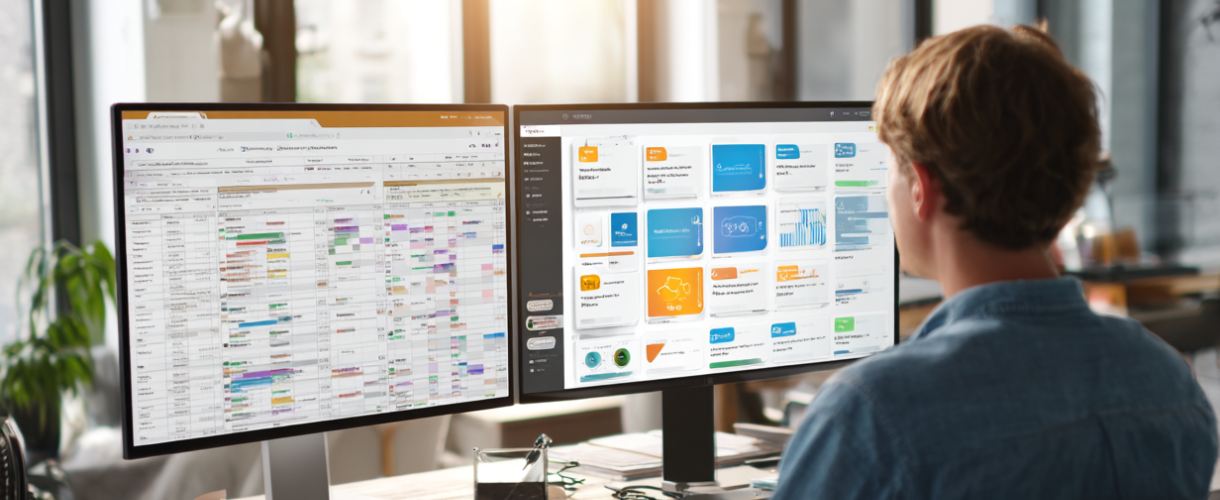Manual invoice processing is a silent saboteur in government agencies. Imagine a finance team buried under mountains of paper, chasing approvals across departments, and racing against deadlines—only to find costly errors, missed discounts, and compliance headaches at every turn. For government CFOs, these inefficiencies don’t just waste time; they drain taxpayer resources, expose agencies to fraud, and make regulatory compliance a daily struggle. The stakes are high: every mismanaged invoice chips away at public trust and the ability to deliver essential services efficiently.
This blog dives deep into how Invoice Automation for Government Agencies transforms these challenges into opportunities. We’ll explore the hidden costs of manual processes, the tangible benefits of automation, real-world results, and how Kuhnic’s expertise empowers agencies to modernize with confidence. Along the way, you’ll find empirical data, actionable insights, and a clear path to smarter, safer, and more transparent government finance.
Why Traditional Invoicing Fails Government Agencies?
Unlike the private sector, government institutions face unique complexities:
- Multi-layered approval chains
- Strict audit and compliance requirements
- Rigid procurement protocols
- Vendor diversity and high invoice volumes
A Gartner report revealed that manual invoice processing costs government entities an average of $15–$35 per invoice, while automated systems can reduce that to $2–$5. That’s not just cost-saving—that’s a massive efficiency leap.
Common problems include:
- Delayed vendor payments leading to strained relationships
- Human error in data entry, causing compliance risks
- Fragmented records making audits painful and time-consuming
- Lack of visibility into cash flow and budgeting
Benefits of Invoice Automation for Government Agencies
1. Increased Efficiency and Faster Processing Times
Manual invoice handling involves multiple layers of review, paper shuffling, email follow-ups, and manual data entry. This leads to significant delays in payment cycles, sometimes taking 30–60 days just to clear a single invoice.
With invoice automation:
Invoices are captured digitally and routed automatically to the correct approvers.
Workflows are streamlined, enabling approvals in hours instead of weeks.
Bottlenecks caused by employee absences or misfiled paperwork are eliminated.
2. Improved Accuracy and Error Reduction
Government agencies often handle thousands of invoices each month, increasing the risk of human error, such as incorrect amounts, duplicate entries, or misclassified vendor data.
Automation improves accuracy by:
Using AI-powered Optical Character Recognition (OCR) to extract and validate invoice data.
Flagging inconsistencies or duplicates before approval.
Automatically matching invoices to purchase orders and delivery receipts.
This significantly reduces costly mistakes, late fees, and the risk of audit penalties.
3. Enhanced Compliance and Audit Readiness
Government agencies are held to strict financial transparency, accountability, and reporting standards. Manual processes often lack clear audit trails and consistent documentation, leading to compliance vulnerabilities.
With invoice automation:
Every invoice action is time-stamped, recorded, and traceable.
Agencies have immediate access to digital records for internal or external audits.
Reports can be generated on demand to meet federal, state, or local compliance standards.
4. Cost Savings and Resource Optimization
Processing an invoice manually can cost anywhere from $15–$35 due to labor, materials, and inefficiencies. Automated systems reduce this to as low as $2–$5 per invoice, according to Gartner.
Cost-saving advantages include:
Reduction in paper usage, mailing, and physical storage.
Lower need for data entry staff, freeing teams to focus on higher-value work.
Fewer late payment fees or vendor disputes.
Over time, these savings contribute to better budget utilization and enable agencies to redirect funds to citizen-focused initiatives.
5. Increased Transparency and Real-Time Insights
Manual systems make it difficult for finance and procurement teams to get a clear, up-to-date picture of invoice status, vendor payments, and overall spend.
Invoice automation platforms provide:
Real-time dashboards showing invoice progress, payment schedules, and approval status.
Analytics to monitor vendor performance, identify spending trends, and prevent fraud.
Centralized data that can be shared across departments for collaboration and oversight.
This level of transparency strengthens accountability, supports policy enforcement, and enables data-driven decision-making at every level of government.
Ready to See What AI Solutions Can do for Your Business?
Implementing Invoice Automation for Government Agencies: A Step-by-Step Guide
1. Assess Current Workflow
Conduct an internal audit to understand invoice volumes, bottlenecks, and common failure points.
2. Define Objectives
Whether it’s reducing processing time or ensuring compliance, clarify your agency’s key goals.
3. Involve Key Stakeholders
Finance teams, IT, procurement, and department heads should all be part of the planning.
4. Choose the Right Technology Partner
Look for expertise in the public sector, like Kuhnic’s proven record with government entities.
5. Pilot the Solution
Start with one department or vendor stream to test and refine the process.
6. Scale and Optimize
Roll out across other departments, continuously improving workflows with insights from Kuhnic’s analytics dashboard.
How Kuhnic Enables Smarter Financial Management?
Kuhnic is not just another automation tool. It’s a tailored solution built specifically for the complexities of public sector procurement and finance.
Key features:
Configurable Approval Workflows
Ensure that every invoice follows the correct chain of command. Whether it’s one department or ten, Kuhnic routes invoices to the right people at the right time.AI-Powered Invoice Recognition
Upload any invoice—PDF, image, or digital form—and Kuhnic’s AI extracts, verifies, and classifies the data with industry-leading accuracy.Compliance-First Design
Our platform ensures every invoice is audit-ready, tagging each action with a timestamp and user ID for full traceability.Multi-Vendor Integration
Kuhnic integrates with existing government ERP systems, including SAP, Oracle, and Microsoft Dynamics.Cloud & On-Premise Flexibility
Depending on your security needs, Kuhnic offers both deployment models with full data encryption.
How to Get Started with Kuhnic
We understand that transforming finance operations in the government sector can seem daunting. That’s why Kuhnic offers end-to-end support from evaluation and planning to implementation and optimization. Explore our solutions or see real-world case studies.
Conclusion
We’ve unpacked the growing need for Invoice Automation for Government Agencies, explored how it can solve real-world problems like processing delays and compliance risks, and shared how Kuhnic is purpose-built to meet the unique demands of the public sector.
Invoice automation isn’t just about cutting costs, it’s about building trust, ensuring accountability, and future-proofing your operations.
Ready to transform your financial management with AI Invoice Automation In Public Sector? Contact us today to connect with a Kuhnic expert and get started on your journey to greater efficiency, transparency, and success.
FAQs
1. How does Kuhnic ensure compliance in invoice automation for government agencies?
Kuhnic provides full audit trails, user access logs, and timestamped actions to ensure compliance with government standards like FISMA and GDPR. Every invoice is traceable and secure.
2. Can Kuhnic integrate with legacy ERP systems used in government?
Yes, Kuhnic is built with flexible APIs and connectors for seamless integration with platforms like SAP, Oracle, and Microsoft Dynamics commonly used in public sector operations.
3. What’s the typical ROI timeline for using Kuhnic?
Most government clients experience a return on investment within 6–12 months through reduced labor costs, improved efficiency, and fewer late payment penalties.
4. Is Kuhnic suitable for small and mid-sized agencies?
Absolutely. Kuhnic’s modular pricing and flexible deployment make it ideal for agencies of any size. You can start with a pilot program and scale as needed.
5. How do we get started with Kuhnic for invoice automation?
Simply [contact our team] to schedule a consultation. We’ll assess your current invoicing processes, identify quick wins, and provide a tailored roadmap to automation success.




